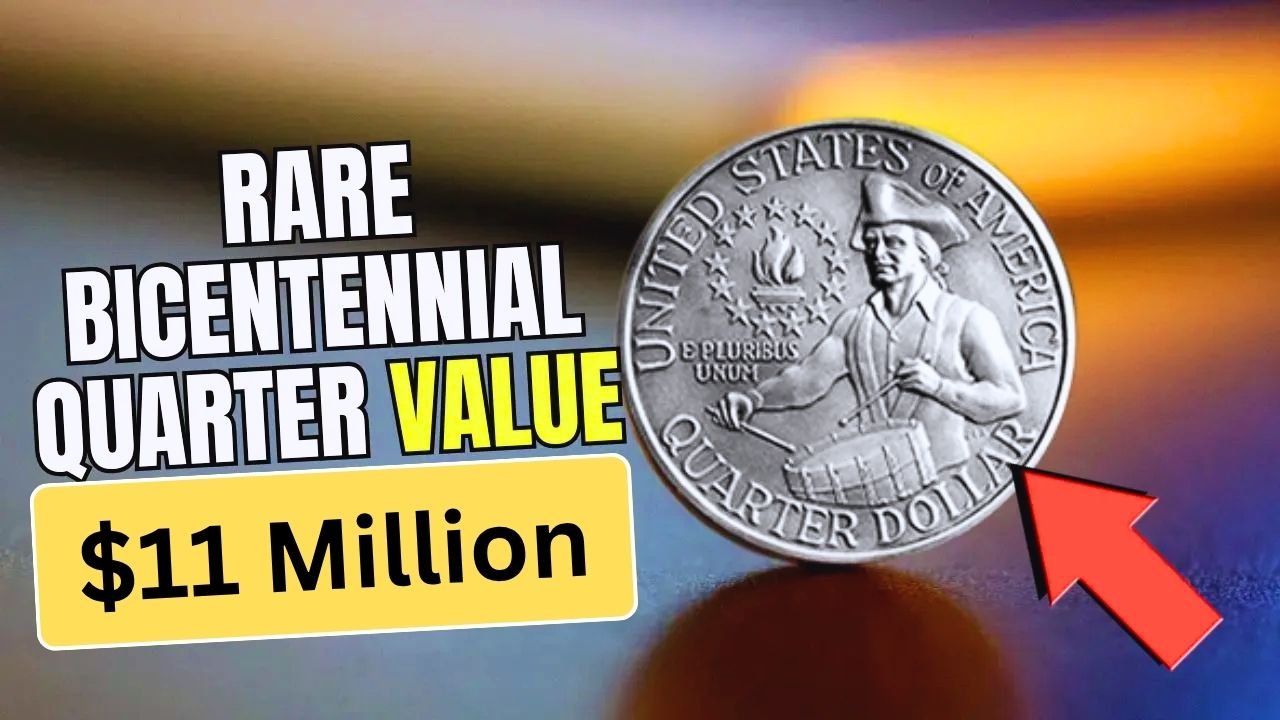A Coin Worth Millions
Have you ever checked your loose change for a treasure? A rare 1976 Bicentennial Quarter could be worth up to $11 million! This quarter, made to celebrate America’s 200th birthday, isn’t your average pocket change. Most of these coins are worth just 25 cents, but a few special ones have sold for jaw-dropping prices at auctions. Collectors are going wild over these rare finds, and you might have one sitting in a jar or your wallet right now.
The 1976 Bicentennial Quarter has a unique design. It shows a colonial drummer on the back and the dates “1776-1976” to mark the Declaration of Independence. While millions were made, only a handful have the perfect mix of rare features that make them super valuable. These coins were minted in Philadelphia, Denver, and San Francisco, but the San Francisco version, especially those with a “D” or “S” mark, can be the real jackpot if they’re in perfect condition or have specific errors.
Why Is It So Valuable?
What makes some of these quarters worth millions? It’s all about rarity and condition. Some coins have unique errors, like being struck on the wrong metal or having a double-stamped design. For example, a few were accidentally made on silver planchets meant for other coins, making them super rare. Others are valuable because they’re in pristine, uncirculated condition, graded highly by experts like the Professional Coin Grading Service (PCGS).
Another big factor is demand. Coin collectors, or numismatists, are always hunting for unique pieces to add to their collections. When a rare 1976 quarter pops up, it can spark a bidding war at auctions. One such coin sold for $11 million because of its flawless condition and rare minting error. Stories like this get people excited, wondering if they’re holding a fortune in their hands.
How to Spot the Rare Ones
Want to know if you’ve got a million-dollar quarter? First, check the mint mark. Look for a tiny “S” or “D” on the front, near George Washington’s head. No mark means it was made in Philadelphia. Next, inspect the coin’s condition. Is it shiny and untouched, or worn and scratched? Coins in “mint” condition are worth more. You’ll also want to look for errors, like odd coloring or doubled images, which could mean it’s a rare mistake.
Here’s a quick guide to help you spot a valuable 1976 Bicentennial Quarter:
| Feature | What to Look For | Why It Matters |
|---|---|---|
| Mint Mark | “S” or “D” | San Francisco or Denver coins can be rarer. |
| Condition | Shiny, no scratches | Pristine coins fetch higher prices. |
| Errors | Wrong metal, double stamp | These mistakes make coins unique and valuable. |
Where to Find These Coins
You don’t need to dig through a pirate’s chest to find a 1976 quarter. Start with your own change—check piggy banks, couch cushions, or old jars. Flea markets, estate sales, or even your grandma’s coin collection could hold a gem. If you think you’ve found something special, take it to a coin dealer or get it graded by a professional service like PCGS or NGC. They’ll tell you if it’s a regular quarter or a potential goldmine.
What to Do If You Find One
Found a coin that looks promising? Don’t clean it! Cleaning can ruin its value by scratching the surface. Instead, store it in a soft cloth or plastic holder to keep it safe. Then, reach out to a trusted coin shop or auction house. They can appraise it and tell you if it’s worth thousands or even millions. If it’s a rare one, you might want to insure it before sending it off for grading.
The hunt for a $11 million 1976 Bicentennial Quarter is like a modern-day treasure hunt. It’s exciting to think that a simple coin could change your life. So, next time you’re emptying your pockets, take a closer look you might just find a fortune hiding in plain sight!
